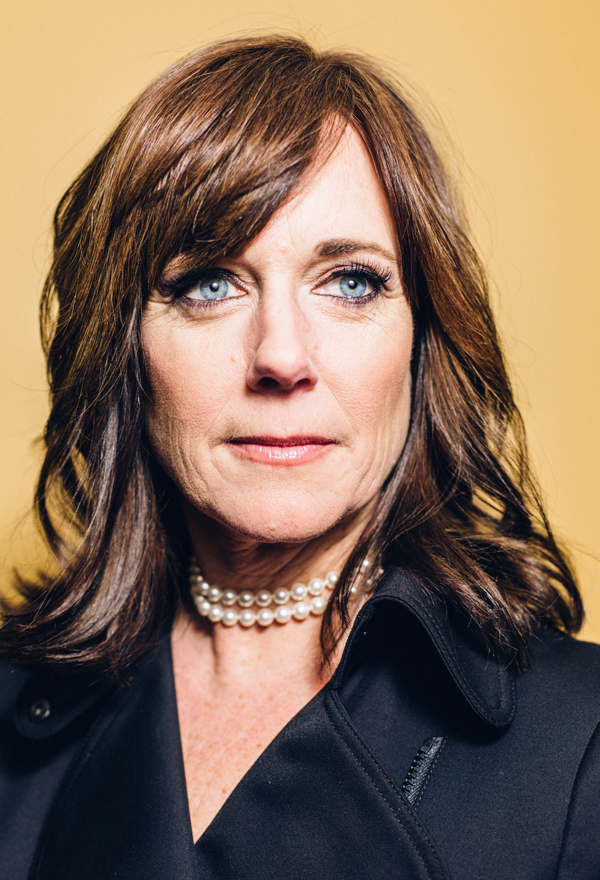Institutional Banking: A Brief History
Ten years ago, financial industry CIOs still had flip phones. They wore blue suits with starched, white shirts and worked on massive PCs anchored to their desks. They hit function keys and typed text into green screen applications from Wall Street highrises. Only a decade later, nearly everything has changed.
Tech leaders in a once rigid and stuffy industry are a bit more relaxed: they’ve loosened up the dress code, they’ve embraced big data, they use the latest mobile and social solutions, and they come to work in open and collaborative environments. And while the industry has made strides, in some ways, institutional banking is still a step behind.
The sector is large and notoriously slow-moving. And after the global financial crisis, regulations are up while interest rates are down. Tech teams operating in the new normal are tempted—and sometimes directed—to simply keep the lights on. But leaders at BNY Mellon realized they would have to look at technology in a new way if they were to move forward in the “post-‘08” world. The company with $385 billion in assets and 50,000 employees around the globe set out to become a digitized, data-driven organization.
Enter Jennifer Cole.
Doubling Down on Digital
The company had hired Cole to build and implement business intelligence programs across multiple divisions to drive revenue and run businesses based on evidence.
When she stepped in as managing director, her first action was to build a system to capture and analyze the company’s $2 trillion in daily triparty transactions. Then, as a strategic growth initiatives leader, she poured over macro trends, created new businesses, and evaluated new and potentially disruptive technologies. Today, as a client technology solutions executive, she is leading a global team on the journey to digitize the entire institution, integrate evidence-based decision-making, and bring capabilities to clients. “We’re leading a complete culture shift within the organization,” she says. “We’re turning BNY Mellon from solely a financial institution into a technology company that operates in the financial industry—offering both financial and technology products and services.”
While big data pushes deeper and deeper into the global financial system, banking executives accustomed to studying numbers and business practices in traditional ways will have to significantly alter their approach. Cole is helping to build a portfolio of scalable technology products as part of a new BNY Mellon technology-as-a-business endeavor. “We’re delivering valuable business insights for our clients and for our company while finding new ways to harness and monetize huge amounts of internal data,” she says. By leveraging big data in new ways, her team can help companies mitigate risk, reduce expenses, make informed decisions, and increase revenues.
“We’re now the cool place to work. We’re a destination employer.”
This all started in 2012 after an era in which big banks—driven by large mergers and acquisitions—created legacy problems as they quickly joined together mainframe after mainframe and piled up systems that didn’t talk to each other. BNY Mellon wanted to unite industry constituents, remove friction, and create a new ecosystem in which major players could easily access and transmit data while discovering new insights and consume best-of-breed products and services.
In doing so, they took a page out of the startup playbook. “Companies living in the sharing economy take their tech components from others,” Cole says. “Uber didn’t build their own GPS, or billing, or customer service system. They’ve stitched it all together to build an amazingly profitable company.” She and her team are adapting that philosophy: “Play. Learn. Be daring,” she says. Cole’s team is encouraged to eschew limits and consider the possible, which sometimes means introducing advanced technologies like gamification and augmented reality into their technology toolbox.
For now, they’re embracing open-source software to create reusable and scalable components. And they’re not building to financial industry standards—they’re building to high-tech standards by using the latest frameworks based on those from companies like Facebook, Google, and Twitter. Not only does this strategy give BNY Mellon the tools needed to compete in today’s environment, it also helps the company draw top talent and retain internal developers by teaching them new skills.
NEXEN
Together, internal BNY Mellon teams embarked on a branded development effort known as NEXEN, a multifaceted, open-source, cloud-based technology platform that will help make clients more flexible and efficient. Built on BNY Mellon’s BXP Platform as a Service (PaaS), the NEXEN ecosystem is a fully customizable suite of development tools that Cole says is poised to revolutionize the industry.
A unique and important part of NEXEN is BNY Mellon’s application program interface (API) store, where internal and external developers can find universal APIs. Any developer can upload an API to the store for others to use. “We’ve essentially created a foundation for the entire industry to build upon,” Cole says. The cloud-based platform lowers costs while delivering mature, resilient, and scalable solutions worldwide. Instead of waiting to receive huge data extracts once a night, BNY Mellon clients will be able to choose the API they want and then select the data they need, and when and how they need it.
BNY Mellon’s Very Own App Store
BNY Mellon’s NEXEN app store will allow clients to access not only BNY Mellon products, but also leverage the company’s vendor and Fintech relationships for best-in-class solutions. Designed for ease of use, the store will enable clients to find the solutions they need when they need them, providing choice in selecting the third-party solutions they prefer. BNY Mellon evaluates, identifies client value-add, negotiates best price, and offers them in the app store, providing clients a seamless solution. Third-party developers will also be able to integrate their applications within BNY Mellon’s NEXEN digital ecosystem to create new and innovative solutions to industry challenges. Hundreds of vendors already offer services through BNY Mellon’s platform and will be made available for consumption via the NEXEN app store.
In 2011, Cole cofounded BNY Mellon’s strategic growth initiatives (SGI) group, a think tank designed to identify and facilitate new initiatives. The SGI studied trends and investigated startup companies, and ultimately built and monetized businesses. As that was happening, BNY Mellon’s CIO, Suresh Kumar, also wanted to develop a presence in Silicon Valley to attract talent in the emerging technologies for which the region is known. In 2014, BNY Mellon became one of the first financial services companies to open an innovation center in Palo Alto, California, joining its two innovation labs in India. They’ve now opened additional innovation hubs in Jersey City, Pittsburgh, and London.
At these centers, the open and inviting collaborative spaces are loaded with massive touch screens, sleek ticker tape displays, and all the latest technologies, encouraging the technologists and business users to work side by side. Each innovation center has a specific goal. Those in Palo Alto focus on learning about startups and what tech companies in other industries are doing, while those in London work with managed services solutions. “Our people in these innovation centers are building the tools and systems we use in the API and app stores, and we’re using them to train our workforce,” Cole says, adding that the collaborative atmosphere provides instant feedback, and ultimately, better products.
Another key component of NEXEN is Digital Pulse, which captures data related to BNY Mellon’s internal transactions and generates valuable predictive analytics. “When a client trades a security, we can track every single desk it hits, and we know if it follows or falls out of our process. We know how long it’s in queue, if it was faxed or emailed, what region it’s in, and which employees have touched it,” Cole says.
BNY Mellon currently captures 1.2 billion events in the Digital Pulse ecosystem every month. By automating and tracking all of these events, tech teams can analyze processes to uncover anomalies and then apply 3-D and other visual tools to reduce the time needed to address risks or repair system components. Additionally, those using the system can better understand which trades will fail and why. Now, they’re working to allow clients to access the system so BNY Mellon can partner with users to mitigate risk and proactively address issues as they arise.
Internally, BNY Mellon is using components of Digital Pulse every day in three control rooms, where tech pros and business experts scour real-time data to understand worldwide transaction movements down to the last penny. By reading and analyzing the information, they know when to move money to get the best possible return for each client. “It’s like we’re in the cockpit of a spaceship, armed with all the data we need to go into warp speed with reduced risk,” says Cole of the high-tech environment. She estimates they’ve already saved “tens of millions” of dollars by spotting anomalies and responding quickly. Now, her teams are taking the system to their clients.
BNY Mellon is one of the oldest and most trusted banks on Wall Street—and now, thanks to these innovative approaches, it’s becoming one of the most modern. “These initiatives have been great for our brand,” Cole says.
As with any change in banking, these approaches collected skeptics along the way. Some said it would never work. Others claimed BNY Mellon was going too far in its quest to develop tech products alongside financial ones. But with support from a CEO and board of directors, a strong CIO forged ahead, fueled by client interest. As a result, BNY Mellon already has 2,000 clients on the NEXEN Gateway with many others in line to make the leap. With the foundation in place, the “tech company disguised as a bank,” as Cole calls it, is ready to fill its ecosystem and serve clients in an entirely new way.


